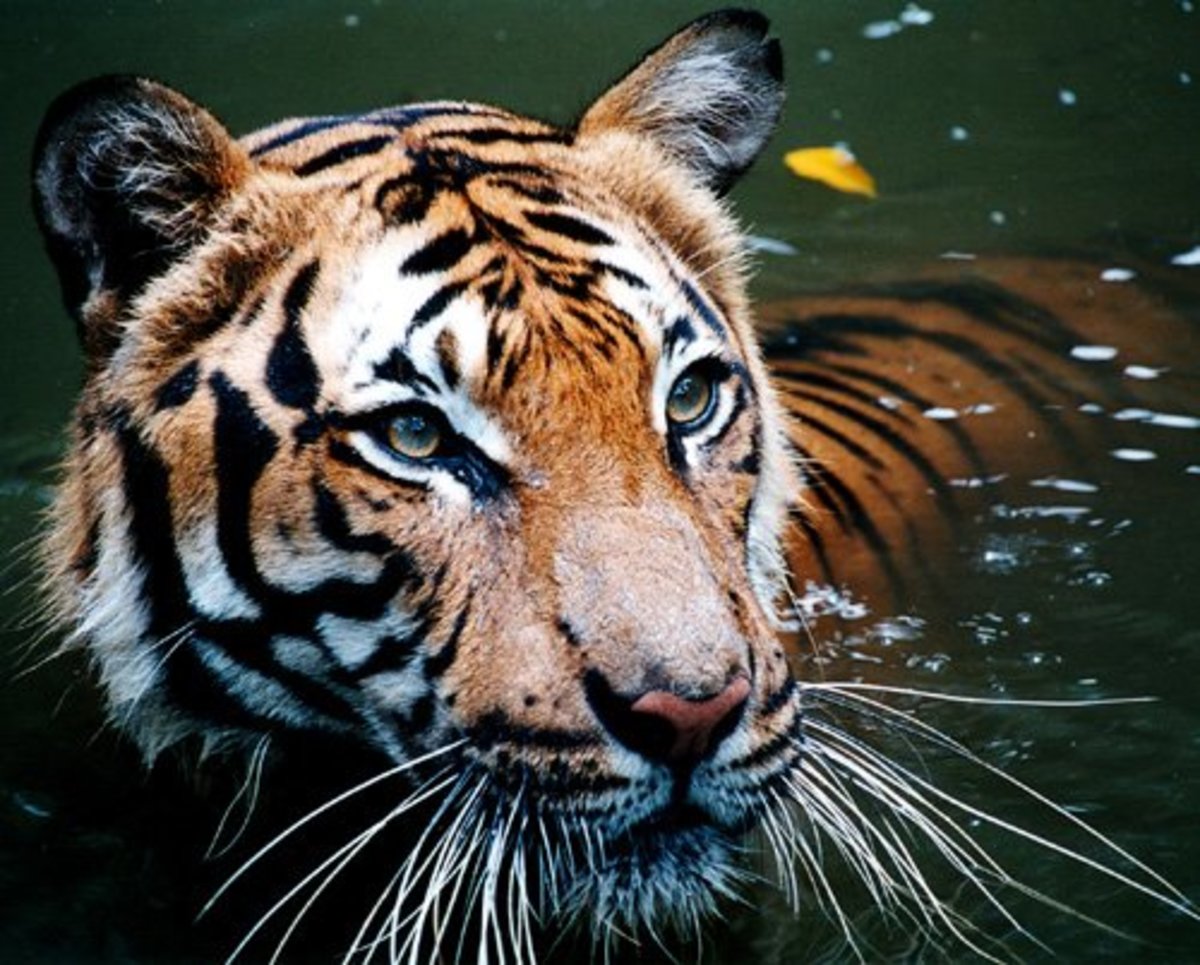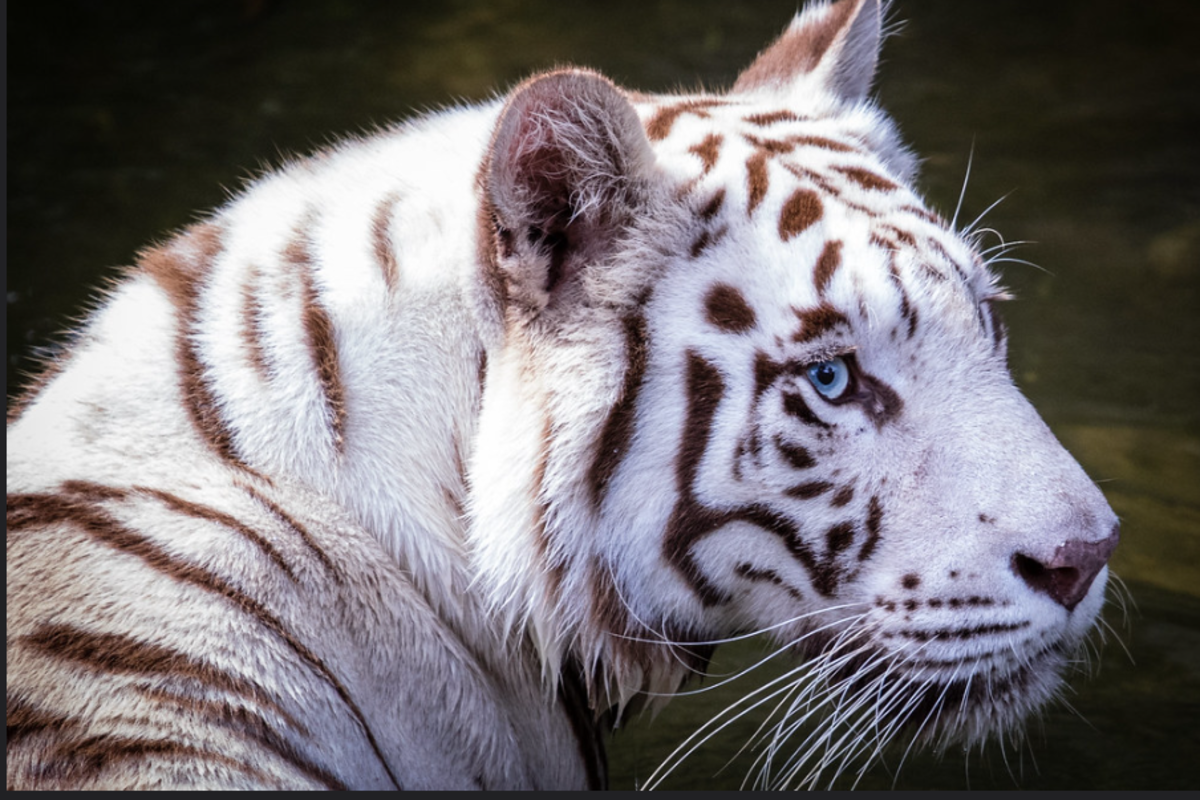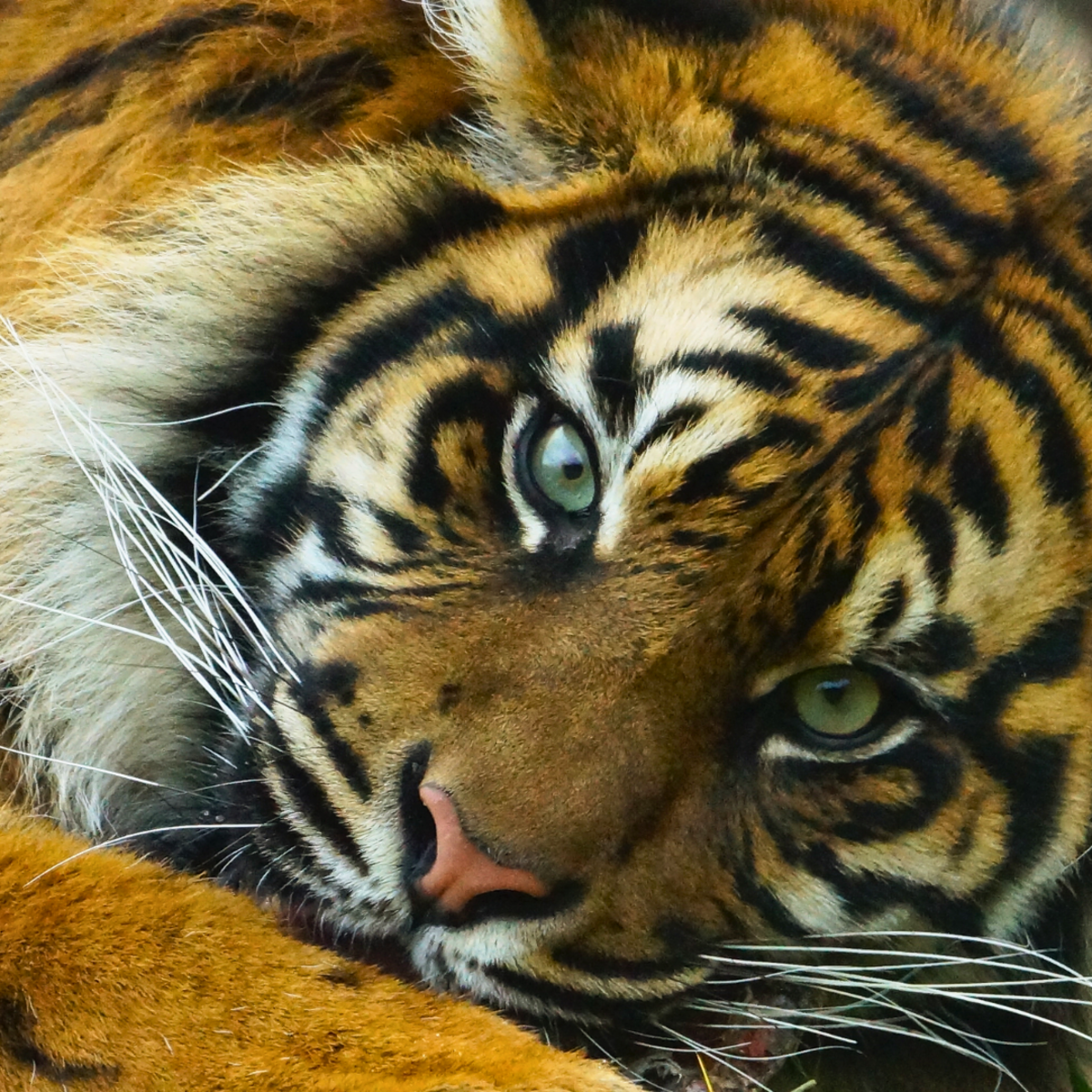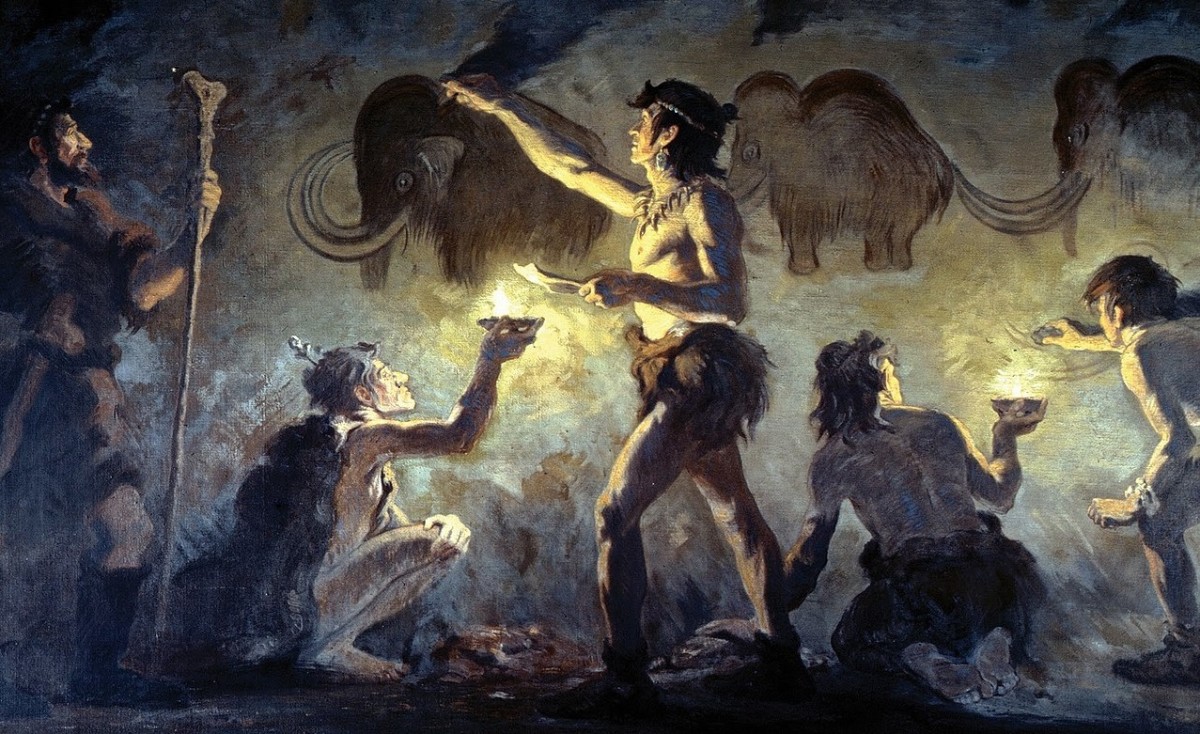- HubPages»
- Education and Science»
- Life Sciences»
- Endangered Species
Bengal Tiger - facts, information and trivia about the Royal Bengal tigers.
The Bengal Tiger - the Pride of India
The Royal Bengal Tiger (Panthera tigris tigris) is one of the most beautiful animals to grace the many forests of our planet, particularly those in the Indian sub continent. It is a symbol of power, authority and strength and at the same time, it is an insignia of beauty and elegance. This gorgeous creature has thus merited a firmly established place in Indian lore, tradition and culture. The Bengal tiger is the national animal of India and Bangladesh, and accounts for almost half of all tigers in the wild today. It was adored and admired by the people of the Indus valley Civilization, who gave it a prominent place on their Pashupati seal, as early as 25 B.C. I am always enthralled and enchanted by its magnetic charm. The nearest I can come to watching one in its near natural habitat is when I go to the Bannerghatta National park in Bangalore. Ranthambore National Park in Rajasthan, the Siriska Tiger Reserve and the Nagerhole National Park in southwestern India are some of the best places to watch the royal Bengal Tigers.

How did the Tiger get its name?
The Bengal tiger belongs to the family, Felidae, popularly known as the “Cat Family”. The species name tigris is the Greek word for "arrow". It is thought that its name was derived from the straight (as an arrow) and fast-flowing Tigris River that flows between Kurdistan in east central Turkey and thePersian Gulf.
The tiger is classified under the genus Panthera because it is capable of roaring, along with the lion, the leopard and the jaguar. Incidentally, the roar of a tiger can be heard for up to 3 kilometres (1.9 miles) away.
Bengal Tiger - Habitat
Though tigers occupy a variety of habitats including tropical evergreen forests, deciduous forests, mangrove swamps, thorn forests and grass jungles, ranging from the Himalayas in North India to Cape Comorinin the south, they are mostly found in the Sunderbans of West Bengal and the forested slopes of the Western Ghats. The Sunderbans is the largest single block of tidal halophytic mangrove forest in the world, and with its dense foliage, thick undergrowth, criss-crossed by many streams, pools of cool water and a complex network of tidal waterways, making it a simply fabulous kingdom for an equally fabulous king. In general, tigers love densely forested areas, both for the shelter that they provide and also, more importantly, because they attract the large ungulates, like deer, which are the tiger’s main prey and food base. Tigers are also excellent swimmers, and so they prefer areas which have small pools of water. It is quite common to find tigers lazing around or playing in pools of water on hot summer afternoons to beat the heat.

The Bengal Tiger - Physical characteristics and other interesting facts
The total body length of adult Bengal male tigers is an enormous 270 to 310 cm (110 to 120 in), while females are slightly smaller, ranging from 240 to 265 cm (94 to 104 in). Male tigers weigh in at a colossal average of 221.2 kg (488 lb), while that of females is 139.7 kg (308 lb). In fact, the Royal Bengal Tiger is the second largest tiger sub species on the planet today, second only to its Siberian cousin. The largest known Bengal tiger was a male with a head and body length of 221 cm (87 in), 150 cm (59 in) of chest girth, a shoulder height of 109 cm (43 in) and a tail of just 81 cm (32 in), perhaps bitten off by a rival male.(Source: Wikipedia)
The rich, orange-red base colour and the elegant stripes on the tiger’s body are absolutely gorgeous and set the tiger apart from all the other big cats. Ironically though, it is this very appearance that conceals the tiger from its prey in the tall grass, making it one of the stealthiest apex predators. The long grass provides much needed camouflage to the tiger by blending in with its stripes, making it almost invisible to its prey.
Tigers have distinctive white circular spots on the backside of their ears. There are two ideas as to the function of these eyespots. One of which is that they function as "false eyes"; making the tiger seem bigger and watchful to a potential predator attacking from the rear. The other idea is that they play a role in aggressive communication because when threatened tigers may twist their ears around so that the backs face forward. This prominently displays the distinctive white markings. The function of the white markings is probably a combination of both ideas. In addition, the white spots also help the mother protect her cubs from possible predators by making her seem watchful and on alert at all times.
Another very interesting feature of the tiger is that on its head, there is a stripped pattern that very closely resembles the Chinese character “wang”, meaning “King”.
Tigers their eating and hunting habits
Tigers are obligate carnivores. They prefer hunting large ungulates such as chital, sambar, gaur, wild boar, just about any kind of deer there is and at times, even hares and porcupines! Tigers follow a “feast and fast” kind of eating pattern - they can eat up to 40 pounds of meat in a single feed and after that, they will not eat for many days at a stretch .
Tigers are ambush hunters, stalking their prey, approaching as closely as possible, and then charging at the animal from behind. They usually bite the neck or throat of their prey. The neck-bite, which severs the spinal cord, is typically used on small or medium sized prey, while the throat bite, which causes suffocation, is used on larger animals.
The endangered Bengal Tiger
The Royal Bengal Tiger is classified by the International Union for the Conservation of Nature and Natural Resources as an endangered species, and this is mainly because of the various threats that the tiger is subject to. The biggest threat to the tiger is the poaching and hunting that take place for its beautiful skin and body parts and the subsequent illegal trading that takes place across the borders of India, Bangladesh and Nepal. For many years, this trade was rampant and unchecked because of the low priority given by these governments to the conservation of tigers, but now they have realised that it is time to take stringent action.
Another reason for the poaching of tigers is the high demand for the body parts of the tigers in traditional Chinese medicine, which is widely administered as a muscle strengthener and treatment for rheumatism and body pain.
There is also one more major problem - that of the man- wildlife conflict. Tigers have been known to attack cattle on farms that are adjacent to the forests, and farmers, to protect their livestock, resort to gunning down these tigers. These counter attacks by farmers account for a large percentage of the total tigers that are killed every year. Tigers may also attack humans and the tigers of the Sunderbans, being famous for it, have earned the dubious title of “man-eaters”. However, tigers venture out of the forest only if their regular prey is not available, which mainly takes place due to extensive forest destruction for creating farmlands. Also, it is only when tigers are old or sick, or when young tigers lose their teeth and claws in fights, that they resort to man-eating and cattle attacks, because the prey is more easily available in these cases.
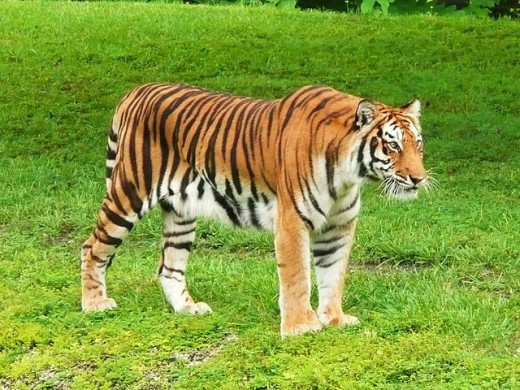
Saving the tiger - Project Tiger and its impact
In India, the government saw the rapidly declining numbers in the 1960s and 1970s and immediately launched “Project Tiger” in 1972, the country’s largest tiger conservation project to date. Almost immediately, tiger numbers started rising again, thanks to the strict implementation of the Environment Laws and the setting up of a huge network of tiger reserves all across the country. As of June 2009, tigers were found in 37 tiger reserves spread across 17 states inIndia. Over the years, there was much need for a greater use of technology in counting the number of tigers, and as it was delayed for some time, the tiger numbers were gradually declining. Poaching once again became prominent, with reserves like the Sariska Tiger Reserve in Rajasthan and Panna Tiger Reserve in Madhya Pradesh losing almost all of their tigers to poaching in 2006 and 2009 respectively. At present, however, things are back in control. The recently concluded tiger census reveals that in this second all-India tiger population estimation study, carried out in the designated 39 tiger reserves across the country, there has been an increase of 295 tigers in India. The population is estimated at 1706, up from 1411 when they were counted last.
Some sections of the media have taken it upon themselves to do their bit for Tiger conservation by spreading awareness and roping in prominent personalities to support the cause. This has added strength to the effort of Tiger conservation in the country.
The Royal Bengal Tiger is India’s pride and one of her most valuable assets, one that can never be measured in terms of material things. The Bengal Tiger is an icon for India and for her heritage and we want to keep this beautiful, stunning and scintillating masterpiece of creation for many generations to see and be awed, just as I am. Let’s join hands to keep the Royal Bengal Tiger breathing!


